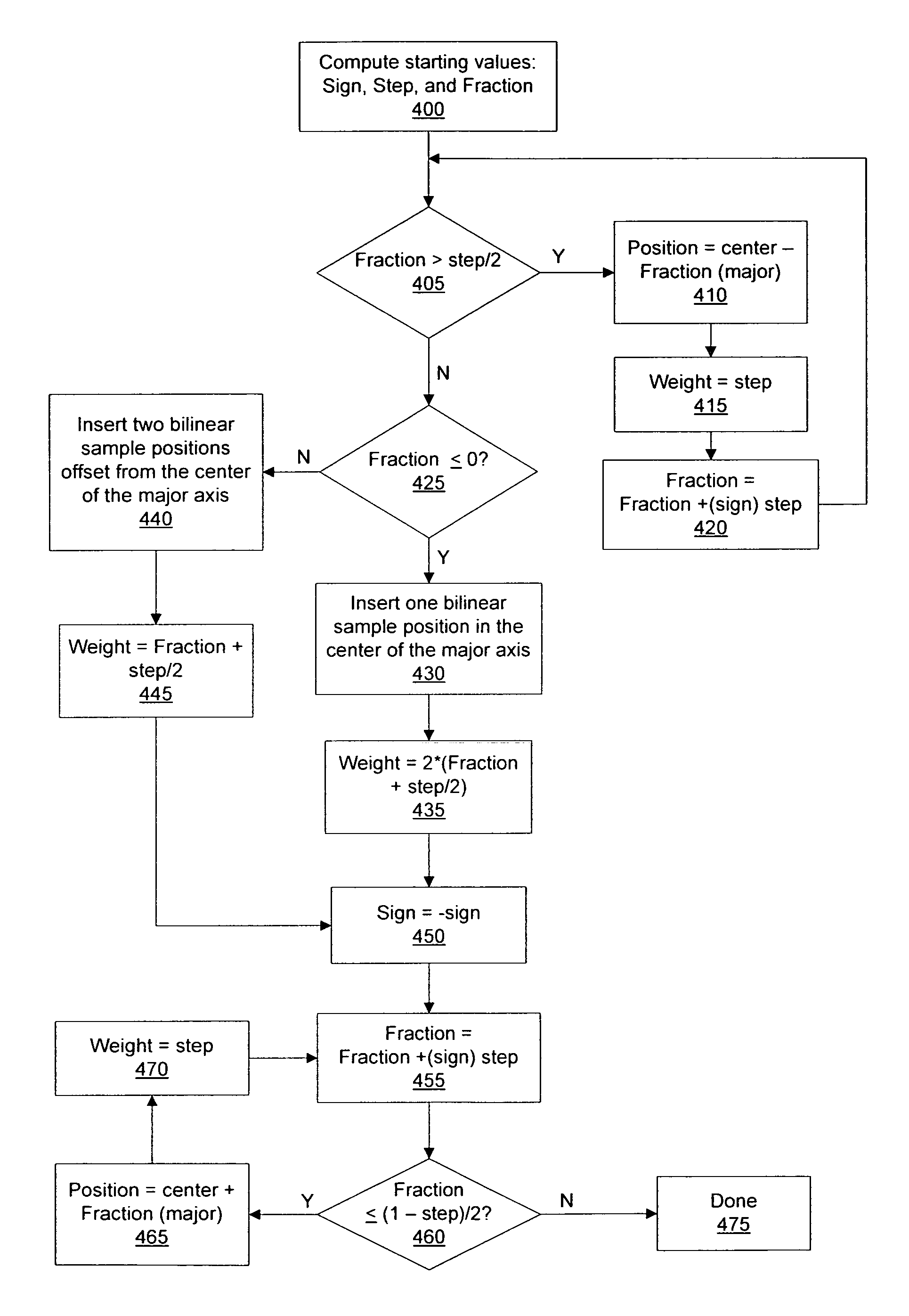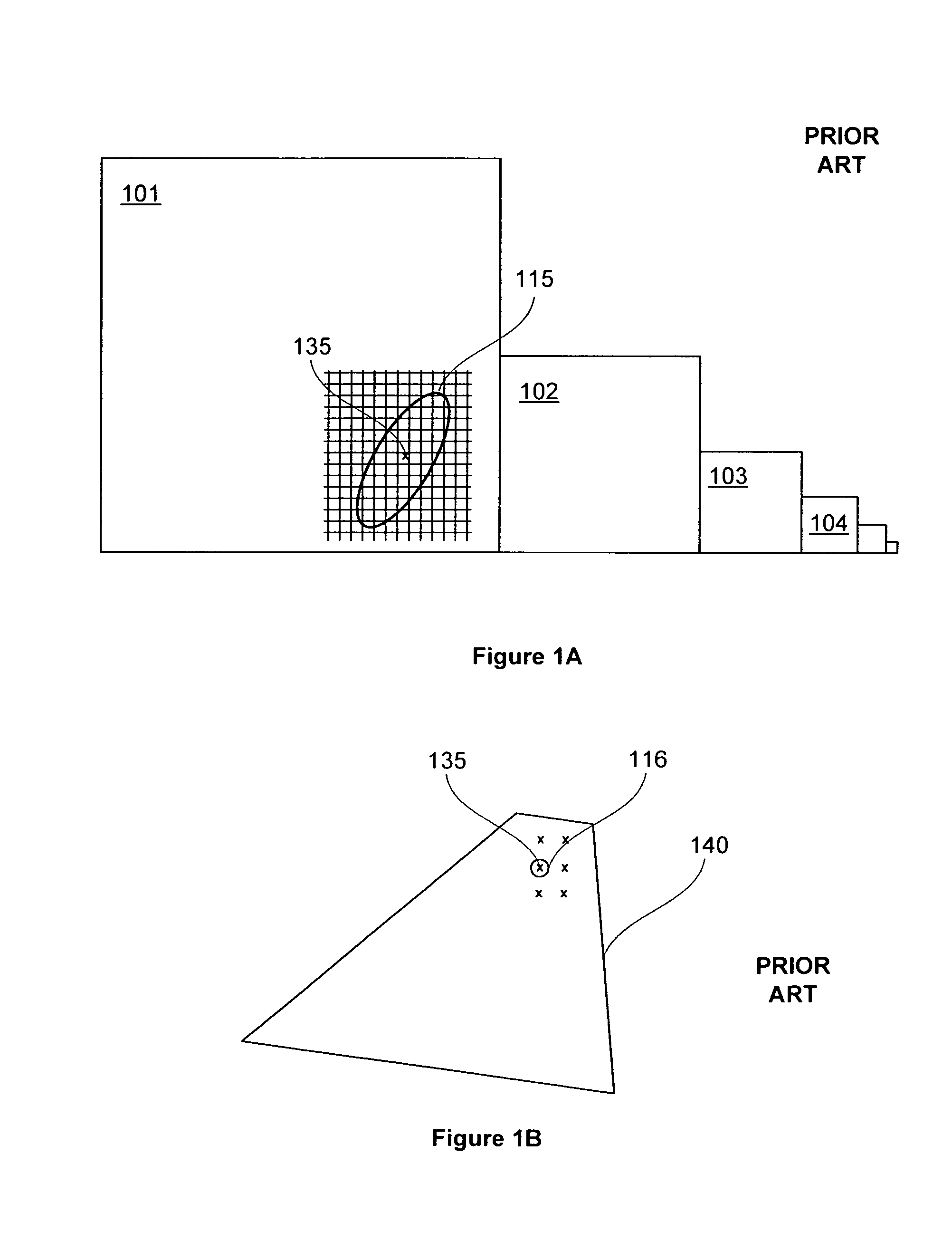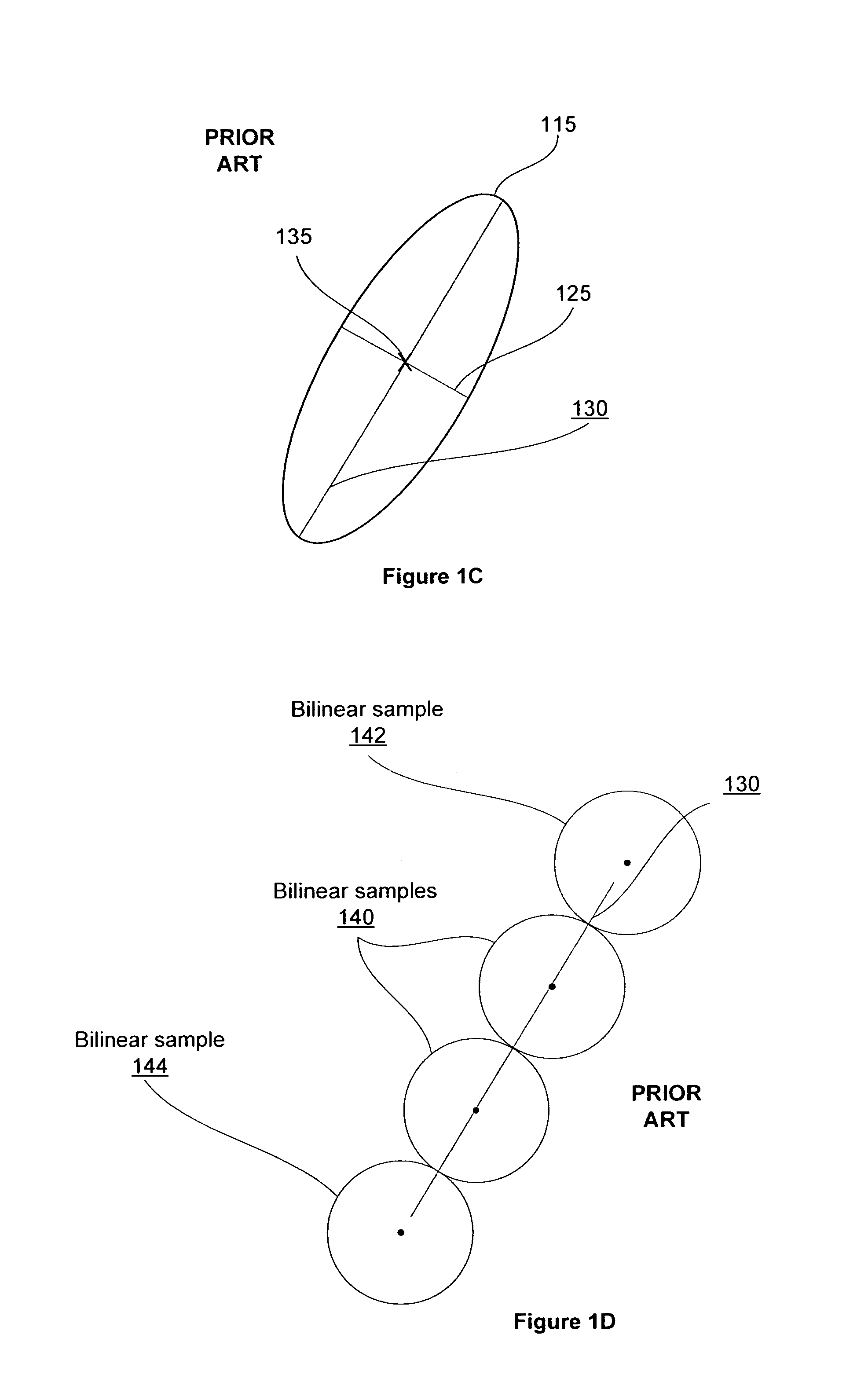Anisotropic texture sampling for odd ratios
a texture and odd ratio technology, applied in the field of computer graphics, can solve the problems of visual artifacts, filter is too sharp, circle is not a good approximation of an ellipse,
- Summary
- Abstract
- Description
- Claims
- Application Information
AI Technical Summary
Benefits of technology
Problems solved by technology
Method used
Image
Examples
Embodiment Construction
[0026]In the following description, numerous specific details are set forth to provide a more thorough understanding of the present invention. However, it will be apparent to one of skill in the art that the present invention may be practiced without one or more of these specific details. In other instances, well-known features have not been described in order to avoid obscuring the present invention.
[0027]The major and minor axes of anisotropy define a footprint that represents the projection of the pixel onto the texture map. Bilinear texture samples are positioned along the axis of anisotropy (the major axis) to approximate the footprint. The number of bilinear texture samples determines the number of texture samples which are read from an LOD of a texture map and filtered to produce an anisotropically filtered texture value. The number of bilinear texture samples may be reduced to improve performance of anisotropic texture mapping. However, to maintain an acceptable level of ima...
PUM
 Login to View More
Login to View More Abstract
Description
Claims
Application Information
 Login to View More
Login to View More - R&D
- Intellectual Property
- Life Sciences
- Materials
- Tech Scout
- Unparalleled Data Quality
- Higher Quality Content
- 60% Fewer Hallucinations
Browse by: Latest US Patents, China's latest patents, Technical Efficacy Thesaurus, Application Domain, Technology Topic, Popular Technical Reports.
© 2025 PatSnap. All rights reserved.Legal|Privacy policy|Modern Slavery Act Transparency Statement|Sitemap|About US| Contact US: help@patsnap.com



